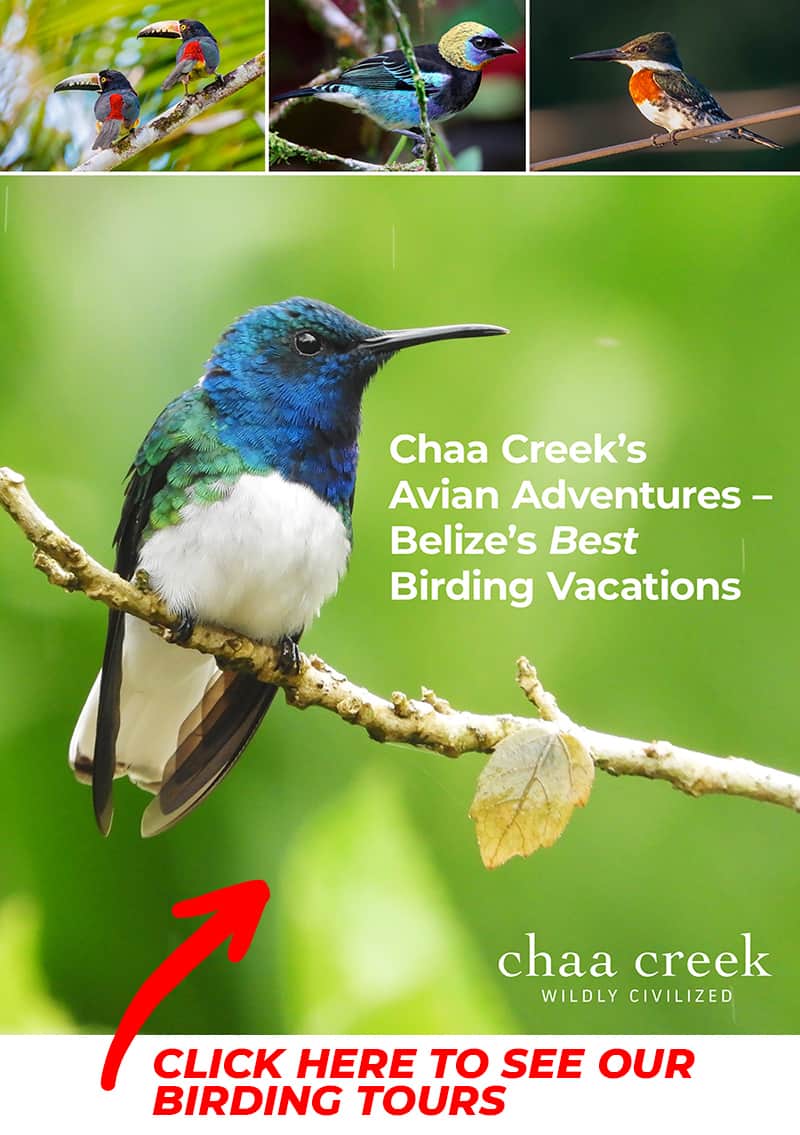Here are 10 Birds of Belize you must see!
Almost 600 bird species have been identified in Belize, 20% of them winter migrants from North America. Even if you are not an ‘avid birder’, you’ll be amazed by the colorful species that you will encounter on any nature trip.
The tropical forests, savannahs, numerous cayes, wetlands, and coastal plains of Belize offer a myriad of habitat to many birds. Nearly half of our nation’s land and adjacent waters are protected under forest reserves, marine reserves, wildlife sanctuaries, national parks and other protected area designation.
We listed the most impressive birds found in Belize:
1. Scarlet Macaw (Ara macao)
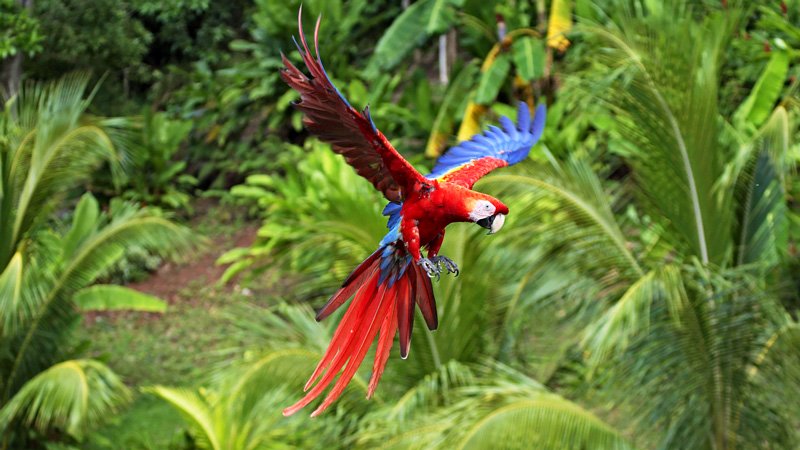
The Scarlet Macaw is arguably the most magnificent bird of the parrot family. With their wide strong wings, macaws can reach speeds of 35 miles per hour. They often fly in pairs or small groups and often call to each other in raucous hoarse voices. Macaws appear to prefer higher elevations and riparian (riverine) forests. They are known to have very large territories. They prefer to nest in holes high up in trees and lay one or two eggs. They feed on specific fruits such as polewood, roaming large areas searching for clumps of their favorite foods.
2. Keel-Billed Toucan (Ramphastos sulfuratus)
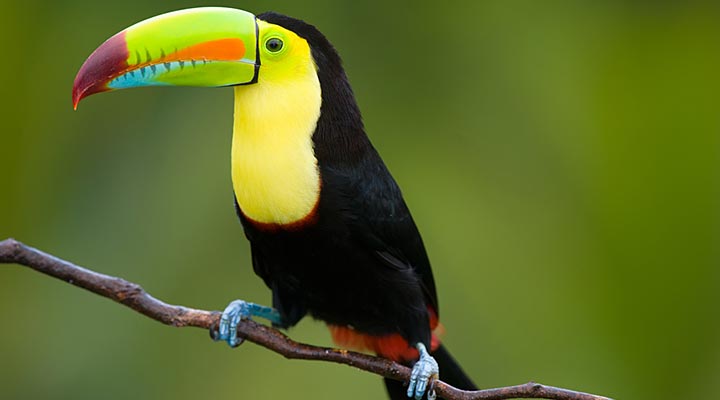
The Keel-billed Toucan, known as the “bill bird”locally, is the national bird of Belize. The most obvious characteristic of the toucan is the huge yellow, orange, red, green and black bill. The toucan’s bill is amazingly dextrous and allows the bird to feed on a variety of tropical forest fruits. The Keel-billed toucans are a very social bird and can often be seen in flocks of six or more birds. They are found throughout Belize’s forests and nest in holes in tree trunks.
3. Blue-Crowned Motmot (Motmotus motmota)
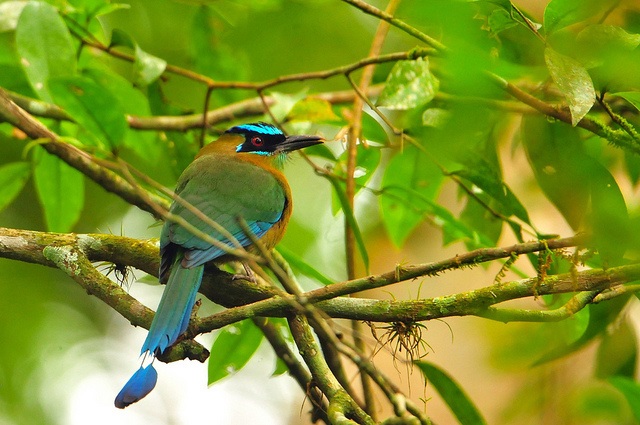
The Blue- crowned mot-mot can be seen throughout the country. Its habitat is in the rainforests below the canopy, or top, of the rainforest. The length of the Blue-crowned motmot is between 11 and 18 inches (28-45 cm). This length includes the tail. The one feature that most distinguishes almost all motmots is their long tails. Close to the tip of the tail, the barbs are missing for about one inch or more. This gives the appearance not unlike that of a tennis racket.
4. Harpy Eagle (Harpia harpyja)
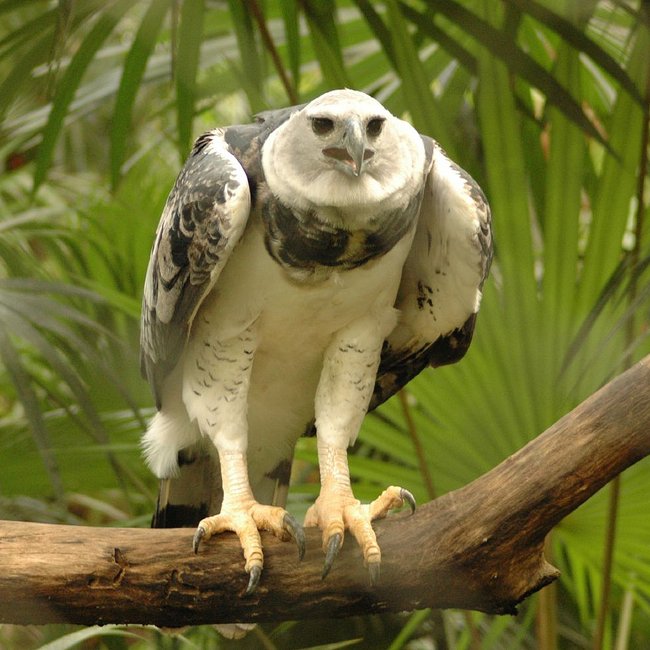
Harpy Eagles are well known as one of the most powerful eagles in the Americas, hunting prey as large as monkeys and sloths for food. Birds can weigh up to 20 pounds and have a 7-foot wingspan making them a formidable predator. In Belize the population of the eagle declined as a result of forest fragmentation, shooting, and nest destruction, resulting in near extirpation of the species. However projects like the Belize Harpy Eagle Restoration Project in collaboration with Sharon Matola, Founder & Director of The Belize Zoo and The Peregrine Fund strives for re-establishment of the harpy eagle within Belize.
Check out Chaa Creek’s New Birds of Belize – An Avian Adventure Package
5. Red-footed booby (Sula sula)
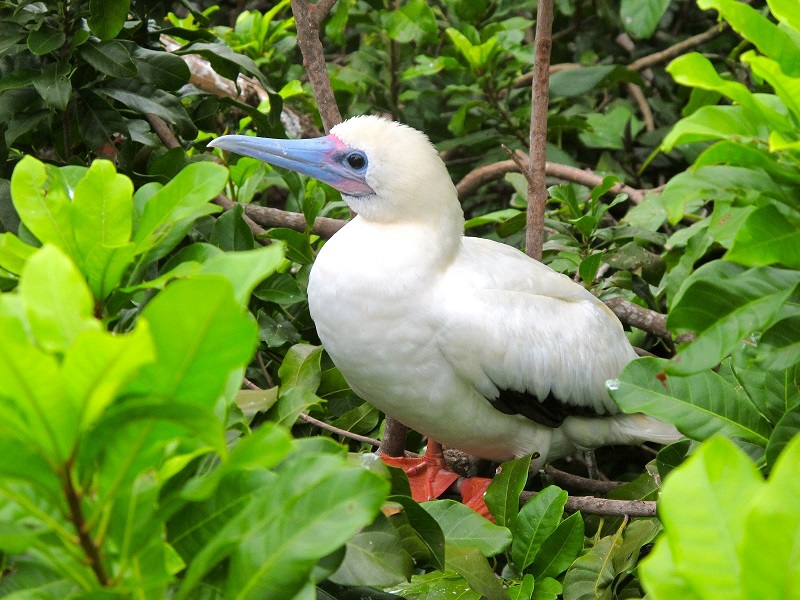
The red-footed booby is a large sea bird of the booby family, Sulidae. As suggested by the name, adults always have red feet, but the colour of the plumage varies. They are powerful and agile fliers, but they are clumsy in take offs and landings. These birds are famous inhabitants of the Half Moon Caye Natural Monument, they live on the caye for about 10 months of the year. Nesting starts around mid-December and the young hatch around March. Chicks are full grown in a matter of months and then its off to the open sea. Flying fish are their favourite food, caught at night when the fish are nearer the surface
6. Great Egret (Casmerodius albus)
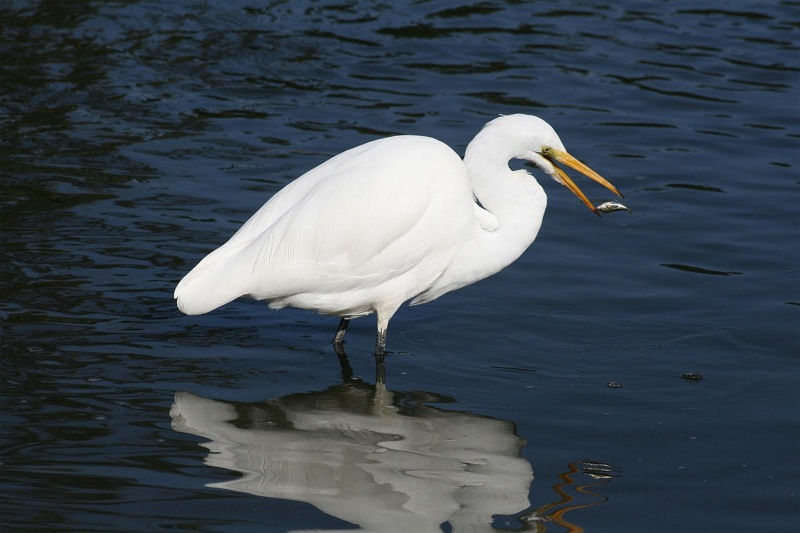
The great egret is a slender, graceful heron that forages in marshlands. During the breeding season it displays a spectacular cloak of delicate feathery plumes. It is the most widespread of all the herons in Belize. The great egret feeds in all the shallow waters of Belize. This large bird coils its sinewy neck, ready to spear prey. Prey includes fish, aquatic invertebrates and reptiles. During the drier months, the bird will stalk small mammals, snails and nesting birds.
7. Magnificent frigate bird (Fregata magnificens)
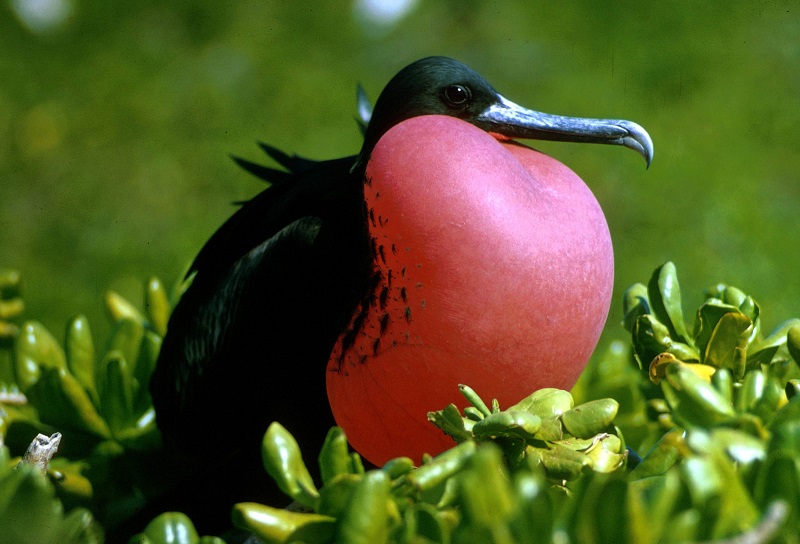
The magnificent frigatebird is a large, lightly built sea bird with brownish-black plumage, long narrow wings and a deeply forked tail. The male has a striking red gular sac which it inflates to attract a mate. The female is slightly larger than the male and has a white breast and belly. Frigatebirds feed on fish taken in flight from the ocean’s surface (often flying fish), and sometimes indulge in kleptoparasitism, harassing other birds to force them to regurgitate their food.
8. Jabiru Stork (Jabiru mycteria)
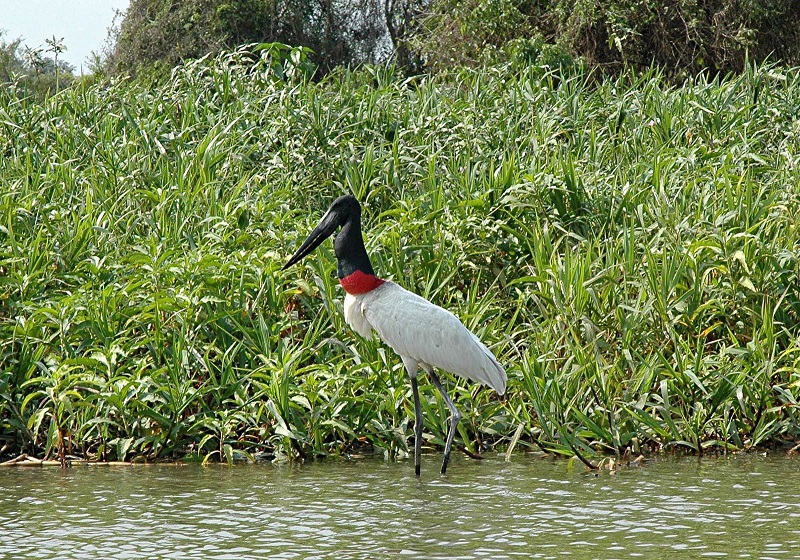
The Jabiru standing five feet tall with wings spanning nine feet, is the largest bird in Belize. Although its range extends from southeastern Mexico to northern Argentina, this native stork is now considered an endangered species. They are sometimes seen in roadside pools, but most reliably observed in the vicinity of the Crooked Tree Wildlife Sanctuary. Recent studies have confirmed that Belize has the healthiest breeding population of jabirus for all of Central America. They arrive in Belize from Mexico in November and nest in the tall pines of the savannas and marshes of the Belizean lowlands. They remain in Belize until June or July, flying north with the first rains.
9. King Vulture (Sarcoramphus papa)
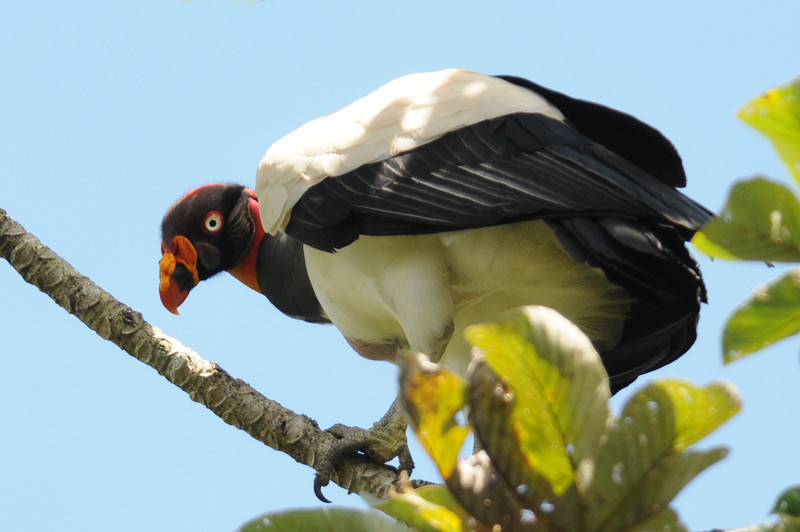
The King Vulture, known as “king jan kro” in Belize, is the largest and most colorful of the four species of vulture in Belize. The extremely thick and strong bill is well adapted for tearing, and the long, thick claws for holding the meat. The King Vulture inhabit the forested lowlands of Belize. They will sometimes fly over savannas searching for dead meat. Their extremely keen eyesight and sense of smell allow them to locate potential food sources easily. They will often locate food by the presence of the other vulture species. Once the King Vulture lands, the other birds make way for it.
10. Yellow Head Amazon (Amazona oratrix)
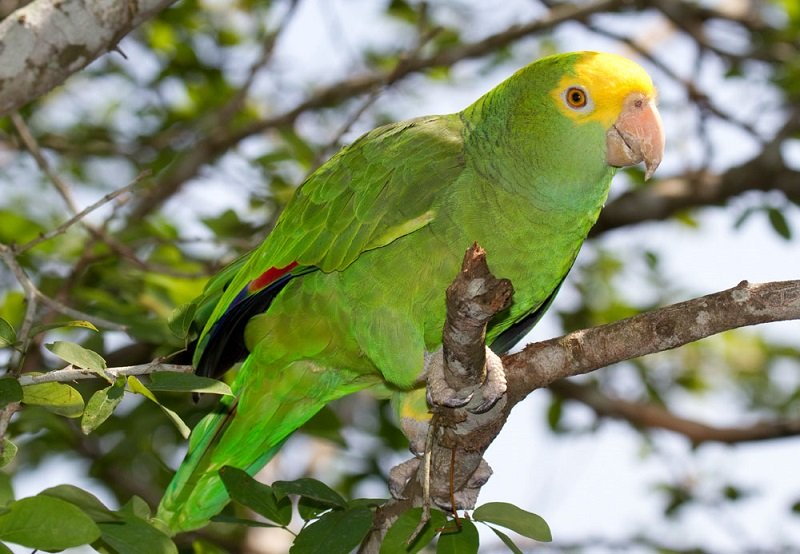
The Yellow-head parrot is a subspecies unique to Belize. Their startling ability to mimic has made them a highly sought-after victim of the illegal pet trade. The most distinctive features of this primarily green parrot are its yellow head and the red patch, or speculum, on each wing, which are lacking in young birds but become more prominent with age. There are also dark blue tips to the flight feathers and yellow tips to the tail, with red marks on the base of the outer tail feathers . The stout, hooked beak is used for cracking nuts and seeds as well as for grasping and climbing, and the feet are also highly adapted for grasping, having two toes pointing forward and two pointing backward.
If you are interested in bird watching in Belize, contact The Lodge at Chaa Creek, pioneer in adventure travel to Belize since 1981.
